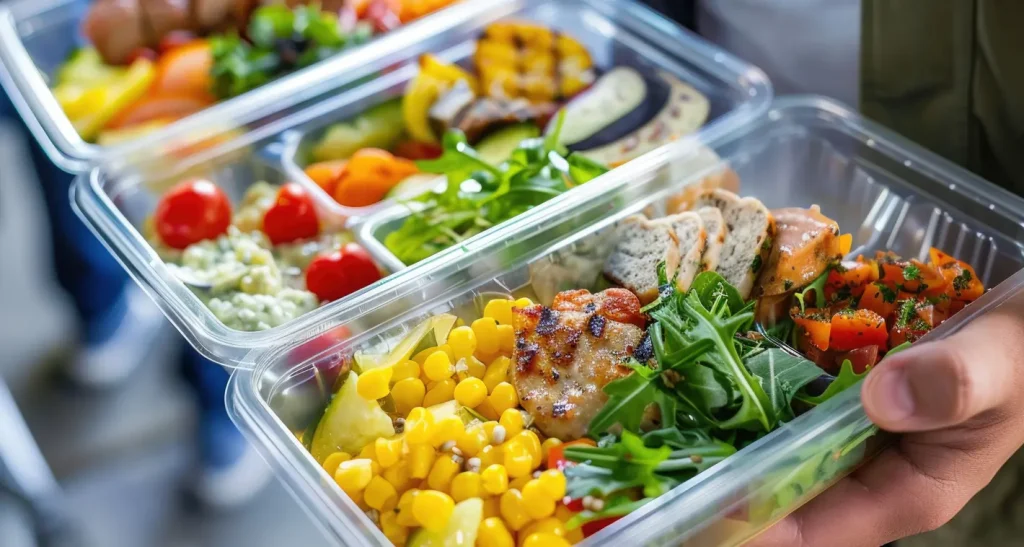DEVELOPING HEALTHY EATING HABITS

A healthy diet and mindful eating habits are essential pillars for longevity and physical well-being. Maintaining balanced nutrition helps protect against many chronic conditions like heart disease, diabetes, and anemia, serving as a powerful preventive tool. Opting for a varied diet and limiting salt, sugar, and saturated fat can create significant improvements in overall health.
However, it’s easier said than done. Today’s world has constant temptations, from food advertisements and the convenience of fast-food options to our busy, high-stress schedules. Healthier choices may sometimes seem more time-consuming or even more expensive than unhealthy options. This article provides easy-to-follow tips on establishing healthy eating habits that don’t rely on extreme diet trends and can lead to sustainable, satisfying results.
Healthy Eating Habits
To start, it’s helpful to distinguish between “healthy eating habits” and “being on a diet.” Dieting is typically goal-oriented, such as weight loss, muscle gain, or athletic preparation, with a more structured approach. Healthy eating habits, on the other hand, represent a sustainable lifestyle where nutritious choices are made regardless of any specific objective.
Building lasting healthy eating habits requires awareness of macronutrients, caloric needs, flexibility, and a positive mindset. Before implementing any major dietary changes, consult with a healthcare professional for personalized advice.
Macronutrients & Calories:
- Carbohydrates: The body’s main energy source, sourced from fruits, vegetables, and grains.
- Proteins: Essential for muscle maintenance, growth, and bodily function regulation.
- Fats: Crucial for metabolism, hormone regulation, and vitamin absorption.
- Calories: The measure of energy in food. Daily caloric needs vary by age, gender, and physical condition, with younger or more muscular people requiring a higher caloric input.
To achieve balance, aim for a diet with approximately 45–65% of calories from carbohydrates, 20–35% from fats, and 10–35% from protein. Balancing these nutrients in each meal supports healthy eating choices and helps prevent deficiencies.

Flexibility
Life can disrupt the best-laid plans, from heavy workloads to long commutes and unexpected appointments. The key to healthy eating is to allow flexibility rather than enforce restrictive dieting. If you occasionally miss your meal plan, look for options that meet your macronutrient needs wherever you are.
For example, when dining out, choose a balanced dish based on your macronutrient requirements and be mindful that eating out often adds calories since we can’t control the preparation methods and ingredients used. Also, adapt your meal frequency to fit your lifestyle—it’s okay if you don’t feel like eating breakfast one day or you didn’t manage to have lunch the other day. You can balance calories and nutrients by adding extra portions on later meals.
Similarly, if you eat more than planned for one meal, adjust by having lighter portions in the next. To make your plan sustainable, try following the 80/20 rule, allowing 80% consistency in healthy choices and 20% for occasional “cheats”. This approach is sustainable and prevents feeling deprived and restricted, allowing you to enjoy your cravings and desires.

Mindset
Viewing food as an ally rather than a restriction is essential. Every type of food, even that heavy burger, can play a part in a balanced diet. There’s no “correct” way to eat; the best eating habit is one that fits your lifestyle and brings you joy.
Healthy eating becomes a habit once it stops feeling like an effort or challenge. Habits are automated processes in the brain that require minimal conscious effort. Aim for convenience and satisfaction in your meal choices, and over time, you’ll find that a nutritious diet feels natural, even when life is hectic. As you focus on making these changes, results will appear gradually, reinforcing that your healthy eating habits are working in the long term.

Keep reading our Wellness Journal for more wellness tips, and don’t forget to follow us on Instagram to receive your daily dose of inspiration!





